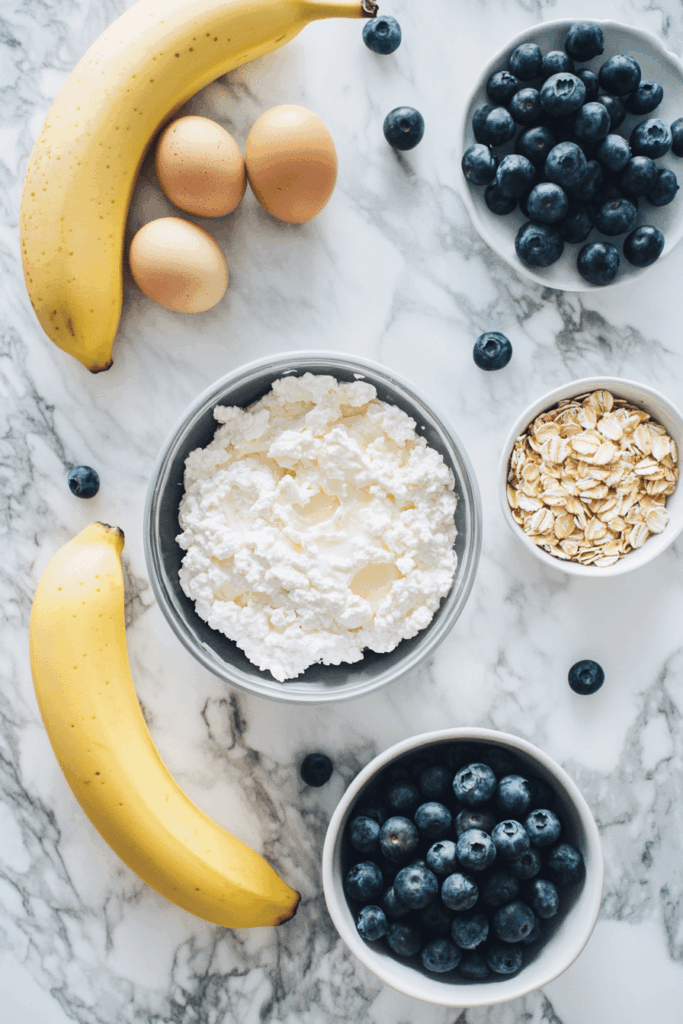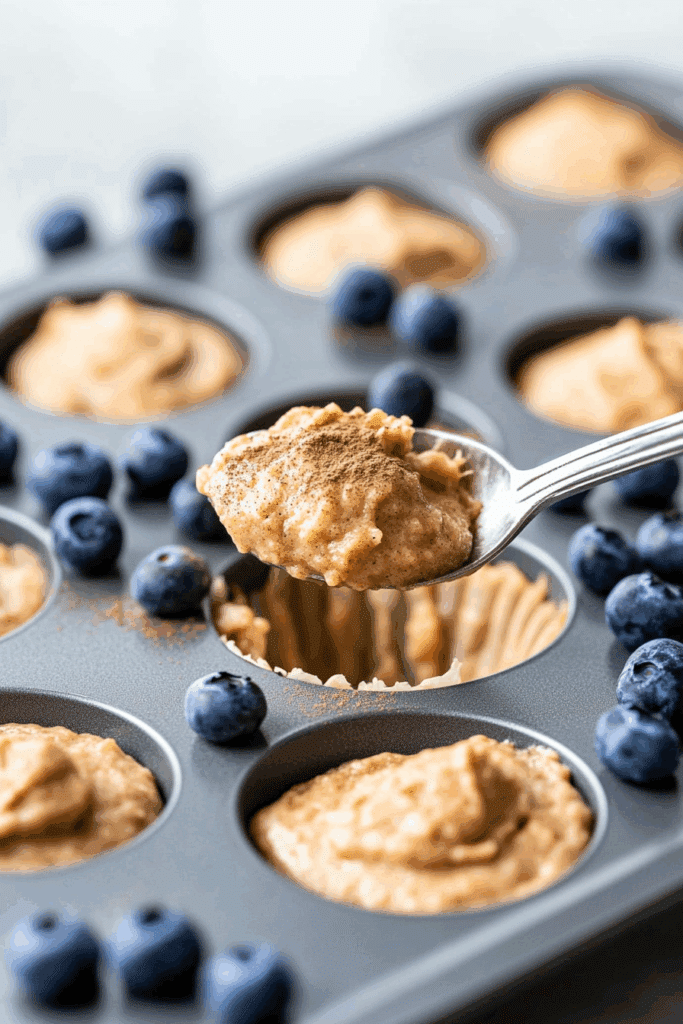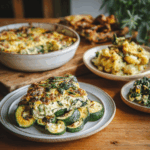Follow Me On Social Media!
Ricotta Cheese Protein Benefits & Delicious High-Protein Recipe
Looking for a way to add more protein to your meals without the heaviness of meat? Let’s talk about ricotta cheese protein. In this post, I’ll walk you through how this soft Italian cheese can play a powerhouse role in your diet. We’ll explore why ricotta stands out as a protein source and how to make it shine in a nourishing, easy-to-make recipe. Plus, I’ll answer your top questions about how ricotta compares to other cheeses when it comes to protein punch. Get ready to cook, snack, and learn!
Why Ricotta Cheese Protein Is a Hidden Gem in the Kitchen
From Grandma’s Kitchen to Today’s Protein Focus
When I was little, I’d sneak spoonfuls of ricotta straight from the bowl while helping my grandmother prepare her baked ziti. Back then, I had no idea that this creamy delight packed any kind of nutrition—it just tasted like comfort. Fast forward a few decades, and I’ve come to appreciate ricotta cheese protein for more than its smooth texture and mild flavor. It’s now one of my go-to ingredients for keeping meals light yet satisfying.
Most people think of protein in terms of meat or eggs, but for women over 40—especially those trying to balance hormones and preserve muscle—easy-to-digest options like ricotta cheese can make a big difference. It’s naturally lower in fat (especially when you choose part-skim) and loaded with whey protein, which supports metabolism and satiety. That makes it perfect for high-protein breakfasts, quick lunches, or post-workout snacks.
Whether blended into pancake batter, dolloped onto toast, or baked into muffins like these blueberry protein muffins, ricotta brings a creamy richness while quietly boosting your protein intake. I especially love adding it to high-protein banana muffins—a sneaky way to satisfy a sweet tooth with something nourishing.
Why Ricotta Cheese Deserves a Spot in Your Meal Plan
Ricotta isn’t just tasty—it’s efficient. One half-cup serving can provide up to 14 grams of protein, especially if you opt for whole milk versions. Plus, it’s versatile: mix it into eggs, stir it into pasta, or blend it into smoothies. It’s that kind of quiet workhorse ingredient that makes cooking feel easy and enjoyable, which is what I’m all about here at Simply Seasoned Recipe.
Short Story for Recipe Card
Hi, I’m Marlene Grace from Savannah, Georgia. This ricotta recipe takes me back to my grandmother’s kitchen—where I first fell in love with creamy ricotta cheese. Today, I use it not just for comfort, but for its protein power too. It’s a gentle, nourishing way to boost daily protein without fuss. I love blending it into muffins or spooning it onto toast for a quick bite. Cooking with ricotta brings both ease and nutrition to my kitchen—and now yours. Let’s make something satisfying and simple with this underrated protein source.

Ricotta Cheese Protein vs Other Dairy Proteins
How Ricotta Cheese Protein Measures Up
If you’ve ever compared dairy products, you’ve probably asked: how does ricotta cheese protein stack up? Here’s the truth—ricotta cheese protein may not be the highest among cheeses, but it delivers unique benefits many miss. Made from whey, ricotta’s protein is fast-absorbing and gentle on digestion. That means it’s not just about the grams—it’s about how your body uses them.
A typical half-cup serving of ricotta cheese offers 10 to 14 grams of protein, depending on whether it’s whole milk or part-skim. That’s an easy way to increase daily protein without adding bulk. And because it pairs so well with both savory and sweet dishes, ricotta cheese protein can show up all over your meal plan—breakfast muffins, lunch bowls, or creamy dinner sauces.
Now let’s talk comparison. Cottage cheese has slightly more protein—about 13 to 16 grams per half cup—but ricotta cheese protein wins when it comes to versatility and texture. It blends better into batters, spreads more smoothly on toast, and adds richness to both banana-carrot muffins and egg-based dishes. If you’re sensitive to stronger flavors or want a softer, less salty taste, ricotta cheese protein fits beautifully.

Choosing the Right Type for Maximum Protein
Not all ricotta is equal when it comes to protein. Look for whole milk ricotta for flavor and higher protein content. Part-skim versions are great too, especially in low-calorie diets, though they have slightly less protein. Avoid ricotta with added gums or sweeteners—real, traditional ricotta cheese protein comes from pure milk and whey, and that’s where the value is.
Try mixing it with Greek yogurt for a double boost, or spooning it over warm sweet potato muffins for a balanced snack. Either way, using ricotta cheese protein intentionally in your cooking will keep your meals both nourishing and enjoyable.
Easy Recipes That Boost Ricotta Cheese Protein in Your Meals
Ricotta Cheese Protein for Breakfast, Lunch, and Snacks
Let’s be honest—eating more protein sounds great until it feels like a chore. That’s why I love ricotta cheese protein: it’s smooth, adaptable, and effortless. You don’t need to overhaul your entire meal plan—just slip it in where it makes sense.
For breakfast, I mix ricotta cheese protein into pancake batter or swirl it into overnight oats. It gives the dish body without making it heavy. When I’m craving something sweet but nourishing, I whip it with cinnamon and honey and spread it over toast. It’s especially good topped with fresh berries or a spoonful of chia jam.
Lunch is another perfect time for ricotta cheese protein to shine. You can stir it into a warm grain bowl, mix it into pasta, or even use it as a sandwich spread instead of mayo. It works beautifully in high-protein, vegetarian options like a roasted veggie wrap or a quinoa bowl. I also love adding it to sausage and egg muffins for a convenient grab-and-go lunch.
Quick Dinners with High Ricotta Cheese Protein Payoff
Dinner might be where ricotta cheese protein shows its fullest potential. Stir it into marinara and spoon it over chicken or zucchini noodles. Or try layering it into a stuffed sweet potato with spinach and garlic for a comforting meal that’s high in flavor and nutrition.
One of my go-to tricks is using ricotta cheese protein in savory muffins like meatloaf muffins. The ricotta keeps them moist and tender while naturally boosting the protein content. Plus, they freeze well—perfect for batch cooking.
Another trick? Bake it. Ricotta cheese protein works wonders in baked egg casseroles or grain-free lasagna. It holds everything together while adding that creamy, satisfying richness. And because ricotta cheese protein is mild, it never competes with other ingredients—it supports them.
By using ricotta this way, you’re not just feeding your body protein. You’re creating comfort food that fuels you. That’s what cooking should feel like—simple, satisfying, and smart.
Health Benefits of Ricotta Cheese Protein + FAQs
Why Ricotta Cheese Protein Supports Women’s Wellness
Here’s the thing about ricotta cheese protein—it’s not just good, it’s smart. As women over 40, we need nutrient-dense foods that support muscle maintenance, bone health, and digestion. Ricotta fits right in.
Its protein comes from whey, which is highly bioavailable. That means your body absorbs and uses it efficiently. Whey protein is linked to muscle recovery and steady energy, especially when eaten in smaller portions throughout the day. That makes ricotta cheese protein an ideal choice for breakfasts, post-walk snacks, or light dinners.
It’s also rich in calcium, phosphorus, and vitamin A, all of which support bone strength and immune health. And compared to harder cheeses, ricotta tends to be lower in sodium—easier on the heart, especially when you make it yourself or choose clean brands.
I love combining ricotta with gluten-free blueberry muffins or blending it into a chili garlic sauce to spoon over veggies or grilled chicken. With every bite, you’re nourishing more than just your taste buds.
Is ricotta cheese a good protein?
Yes, ricotta cheese is an excellent source of high-quality whey protein. A half-cup can provide around 10–14 grams of protein, depending on the type. It’s ideal for women looking for a light, digestible protein source that pairs easily with sweet or savory meals.
Is it OK to eat ricotta every day?
Absolutely! If you choose plain, low-sodium ricotta, it’s a healthy daily addition. Its protein and calcium content support muscle and bone health, especially in active or aging women. Just watch the portion size and skip brands with unnecessary fillers.
What cheese is the highest in protein?
Parmesan is one of the highest, with over 10 grams of protein per ounce. Cottage cheese also ranks high. However, ricotta cheese protein holds its own due to its digestibility and versatility, especially when made with whole milk and minimal additives.
What has more protein, cottage cheese or ricotta?
Cottage cheese usually has slightly more protein—about 13 to 16 grams per half cup. Ricotta cheese protein averages 10 to 14 grams, but it wins in texture, flavor, and how well it blends into recipes. Both are excellent choices, so it depends on your preference.
Conclusion
Ricotta cheese protein isn’t just a background ingredient—it’s a simple, creamy powerhouse. Whether folded into muffins, spread on toast, or mixed into casseroles, it adds nutrition and ease to your cooking routine. As someone who grew up savoring ricotta in hearty dishes, I now use it purposefully to support my wellness—and I hope you do too.
Let’s keep meals delicious, balanced, and joy-filled—one simply seasoned recipe at a time.





